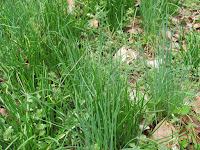 |
| 'Sky Pencil' Japanese Holly |
These shrubs are regularly pruned and shearing. Spring pruning should be avoided as it tend to stimulate tender new growth that may be injured or killed by late frosts.
In general, boxwoods tend to be more shade tolerant than hollies. Boxwood is best sited where it is sheltered from strong winds, and protected from full day sun in the winter months. Foliage may also bronze in winter. Carefully remove heavy snow accumulations as quickly as practicable to minimize stem/branch damage ("splaying").
 |
| 'Dee Runk' boxwood |
There are few shrubs that fit into narrow spaces better than 'Dee Runk' boxwood (Buxus sempervirens 'Dee Runk'. It is a better choice than currently popular cultivar 'Graham Blandy', which is seriously troubled by soil root rot diseases, particularly Phytophthora.
'Sky Pencil' Japanese holly (Ilex crenata 'Sky Pencil') exhibits a similar upright (fastigiate) form. Japanese holly demands a well-drained soil, and is very susceptible to several soil root rot diseases including Phytophthora and Pythium.
Both 'Dee Runk' boxwood and 'Sky Pencil' holly grow well in large landscape containers on patios and along downtown streets. Expect mature heights between 8-10 feet.















